10 Oldest Prisons In The United States - The First Jails
 |
| Top 10 Oldest prisons in the United States |
| Table of Content |
The prison system in the United States dates back more than 230 years and is as old as the country itself.
The system was created based on the English penal code and has many characteristics resembling the English system.
The number of prisons in the United States grew from a handful of debtor prisons in early times to the more than 4,500 facilities in operation today. The current prison population in the U.S., according to U.S. Department of Justice data, is 1.6 million (2011).
The State of Louisiana has the most prisoners per 100,000 people (1,619) while the State of Maine houses the fewest inmates per capita of any state (151 prisoners per 100,000 people).
Take a look at these 10 oldest prisons - the first jails in the United States.
The list of top 10 oldest prisons in the United States
10. West Virginia State Penitentiary
9. Alcatraz Federal Penitentiary
8. Disciplinary Barracks at Fort Leavenworth
7. Joliet Correctional Center
6. San Quentin State Prison
5. Missouri State Penitentiary
4. Eastern State Penitentiary
3. Sing Sing Correctional Facility
2. Auburn Correctional Facility
1. New Jersey State Prison
What are the oldest prisons - first jails in the United States?
10. West Virginia State Penitentiary
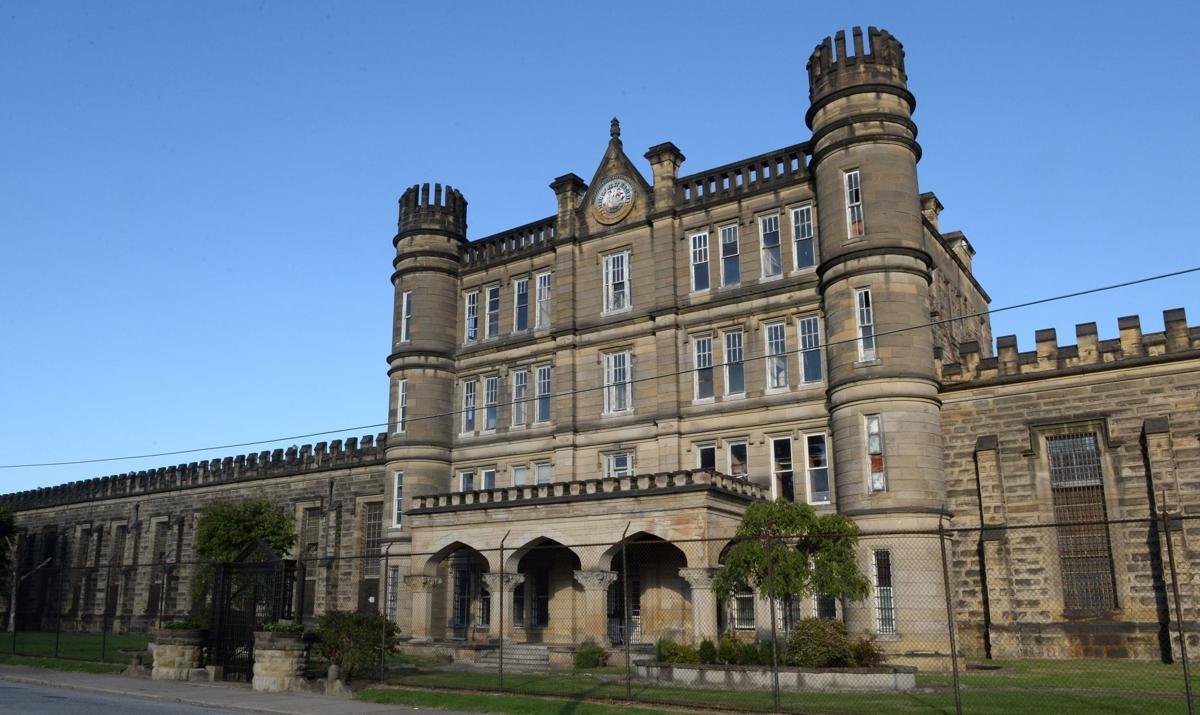 |
| Photo: Charleston Gazette |
ESTABLISHED IN 1866, THE WEST VIRGINIA State Penitentiary housed incarcerated people until 1995. At the time of its closing, 653 were housed and guarded by a staff of 32 employees. The walls in several of the common areas feature murals painted by three of the people imprisoned there (plus the color-mixing help of a fourth, due to one painter’s colorblindness).
The building was divided into four separate sections: North Hall, aka “The Alamo,” where the men whose behavior on the inside earned them 22 to 24 hours per day in a five-by-seven-foot cell; New Wall, which contained the “mainline,” or the general population; “Rat Row,”for those who had testified against others and needed special protection; and “Honor Hall,” for the so-called “trustees,” who had earned special privileges and decreased security.
A range of unusual stories are associated with the facility. For one, Charles Manson once petitioned to be relocated there. His hand-written letter remains on display in the execution area. Then, on New Year’s Day in 1986, there was a rebellion. The governor was called in to negotiate a settlement (the inhabitants got a new cafeteria), but not before three men seen as “snitches” were executed. In 1992, three men managed to tunnel out via the greenhouse in the prison yard.
Over the years, 93 men were executed there for their crimes. The executions were done mostly by hanging, events that were open to the public until 1931, when a man was decapitated by the process. From then on, all executions were “by invitation only,” which meant the man’s family, the family of the victim(s), media, clergy, and coroner. When West Virginia reinstated capital punishment in 1951, an incarcerated man was commissioned to build the penitentiary’s electric chair, “Old Sparky.”
This place has its fair share of ghost stories. Visitors have reported seeing the “Shadow Man,” a static-y silhouette that roams the grounds, in addition to others. Compounding its history, the penitentiary is said to have been built on the leveled grounds of the Adena tribe’s sacred burial site. And there’s reason to believe this, since directly across the street from the central administrative tower is the Grave Creek Mound Archaeological Complex, which is the the largest of the Adena Burial mounds and the only mound remaining in the town of Moundsville.
9. Alcatraz Federal Penitentiary
 |
| Photo: Wikipedia |
The federal prison on Alcatraz Island in the chilly waters of California’s San Francisco Bay housed some of America’s most difficult and dangerous felons during its years of operation from 1934 to 1963. Among those who served time at the maximum-security facility were the notorious gangster Al “Scarface” Capone (1899-1947) and murderer Robert “Birdman of Alcatraz” Stroud (1890-1963). No inmate ever successfully escaped The Rock, as the prison was nicknamed, although more than a dozen known attempts were made over the years. After the prison was shut down due to high operating costs, the island was occupied for almost two years, starting in 1969, by a group of Native-American activists. Today, historic Alcatraz Island, which was also the site of a U.S. military prison from the late 1850s to 1933, is a popular tourist destination.
In 1933, the Army relinquished Alcatraz to the U.S. Justice Department, which wanted a federal prison that could house a criminal population too difficult or dangerous to be handled by other U.S. penitentiaries. Following construction to make the existing complex at Alcatraz more secure, the maximum-security facility officially opened on July 1, 1934. The first warden, James A. Johnston (1874-1954), hired approximately one guard for every three prisoners. Each prisoner had his own cell.
8. Disciplinary Barracks at Fort Leavenworth
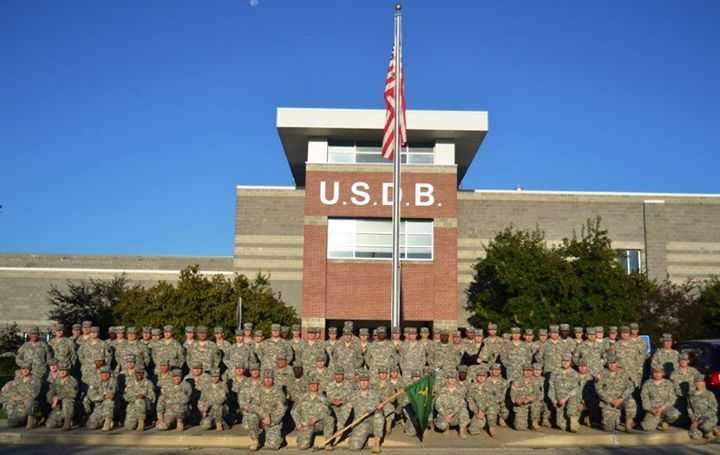 |
| Photo: Yellow. place |
The Disciplinary Barracks are located on the oldest military installation west of the Mississippi River. The barracks are the only maximum security military prison and this is the oldest prison in the federal correctional system. The facility houses 440 male inmates convicted of military crimes. Of the housed prisoners at Fort Leavenworth (known as “The Castle”), six are currently on death row, including former Army Major Nidal Hasan, who was found guilty of the shootings at the base at Fort Hood, Texas that left 13 dead. Another notable prisoner being held at Leavenworth is Chelsea (nee Bradley) Manning, a former Army private and intelligence analyst who was convicted of providing classified documents to Wikileaks founder Julian Assange.
Female prisoners from all branches of the U.S. Department of Defense (DOD) are typically incarcerated in the Naval Consolidated Brig, Miramar instead of the USDB.
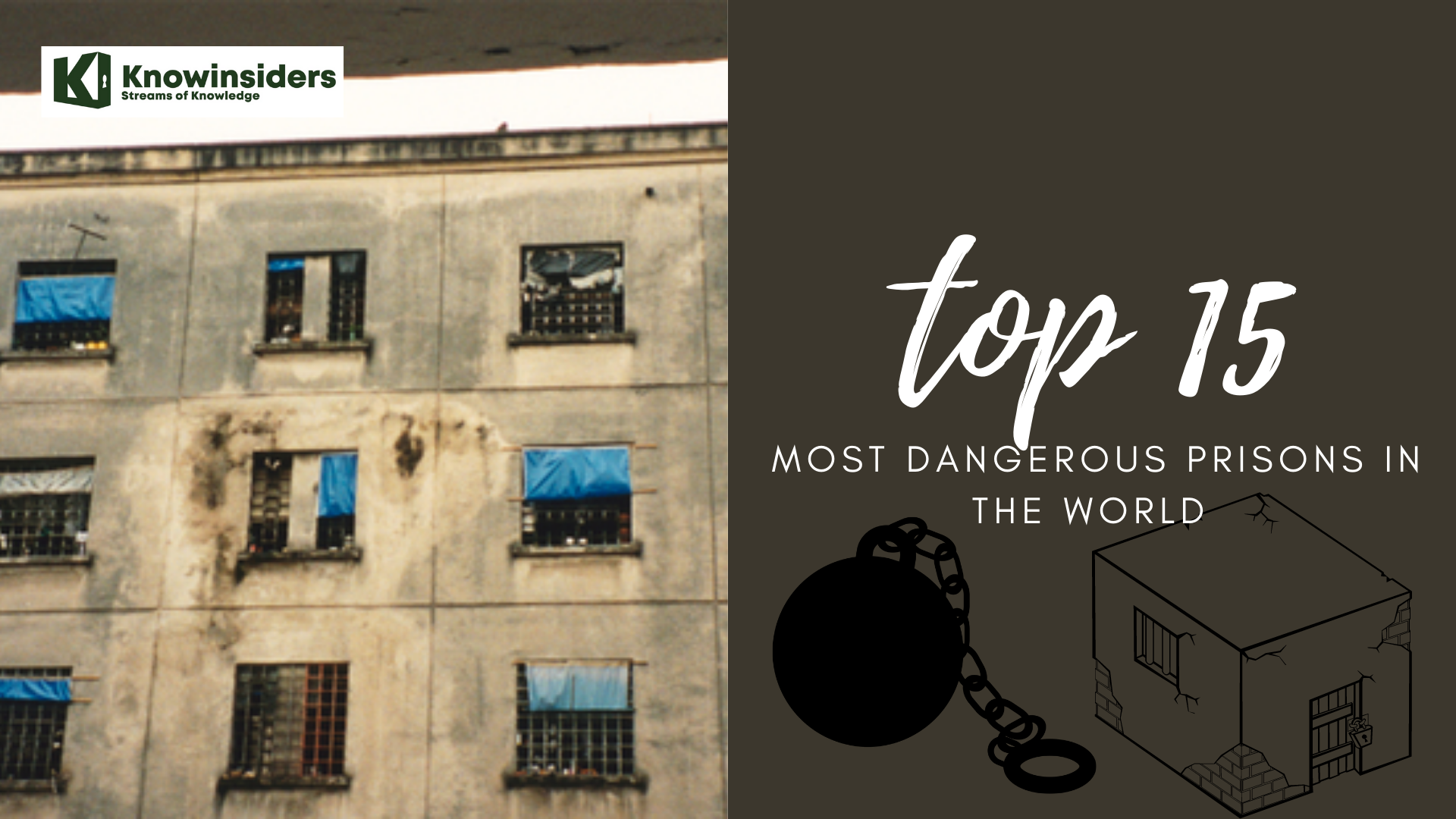 15 Most Dangerous Prisons In The World 15 Most Dangerous Prisons In The World Prison is the last place everyone ever wish to go in, and most prisons are notorious for its violence and brutality. |
7. Joliet Correctional Center
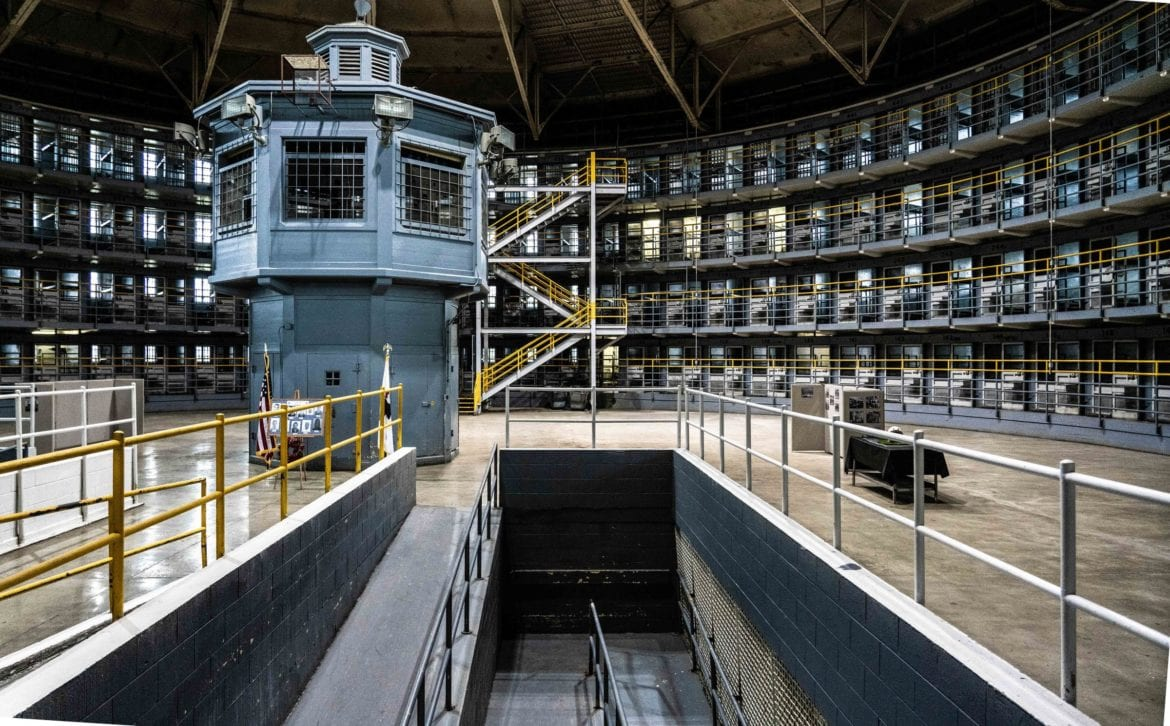 |
| Photo: Injustice Watch |
Joliet Correctional Center (originally known as Illinois State Penitentiary, colloquially as Joliet Prison, Joliet Penitentiary, and the Collins Street Prison) was a prison in Joliet, Illinois, United States, from 1858 to 2002. It is featured in the motion picture The Blues Brothers as the prison from which Jake Blues is released at the beginning of the movie. It is also used for the exterior shots of the Illinois "state prison" in the James Cagney film White Heat, and the location for first season of Fox Network's Prison Break television show, and the movie Let's Go to Prison. In 2018, it opened for tours.
Joliet Correctional Center closed as a holding prison in 2002. Budget cuts and the obsolete and dangerous nature of the buildings were the cited reasons. All inmates and most staff were transferred to Stateville Correctional Center.
As of 2018 the Joliet Area Historical Museum is running tours of the penitentiary for Route 66 travelers and other interested parties. Different tours are being offered: Historic, photographer/tripod friendly and paranormal.
On May 30, 2017, one of the buildings (the mattress factory) in Joliet Correctional Center was heavily damaged by fire, the cause of which was later determined to be arson. This is the third building to be severely damaged or destroyed by fire at the facility.
6. San Quentin State Prison
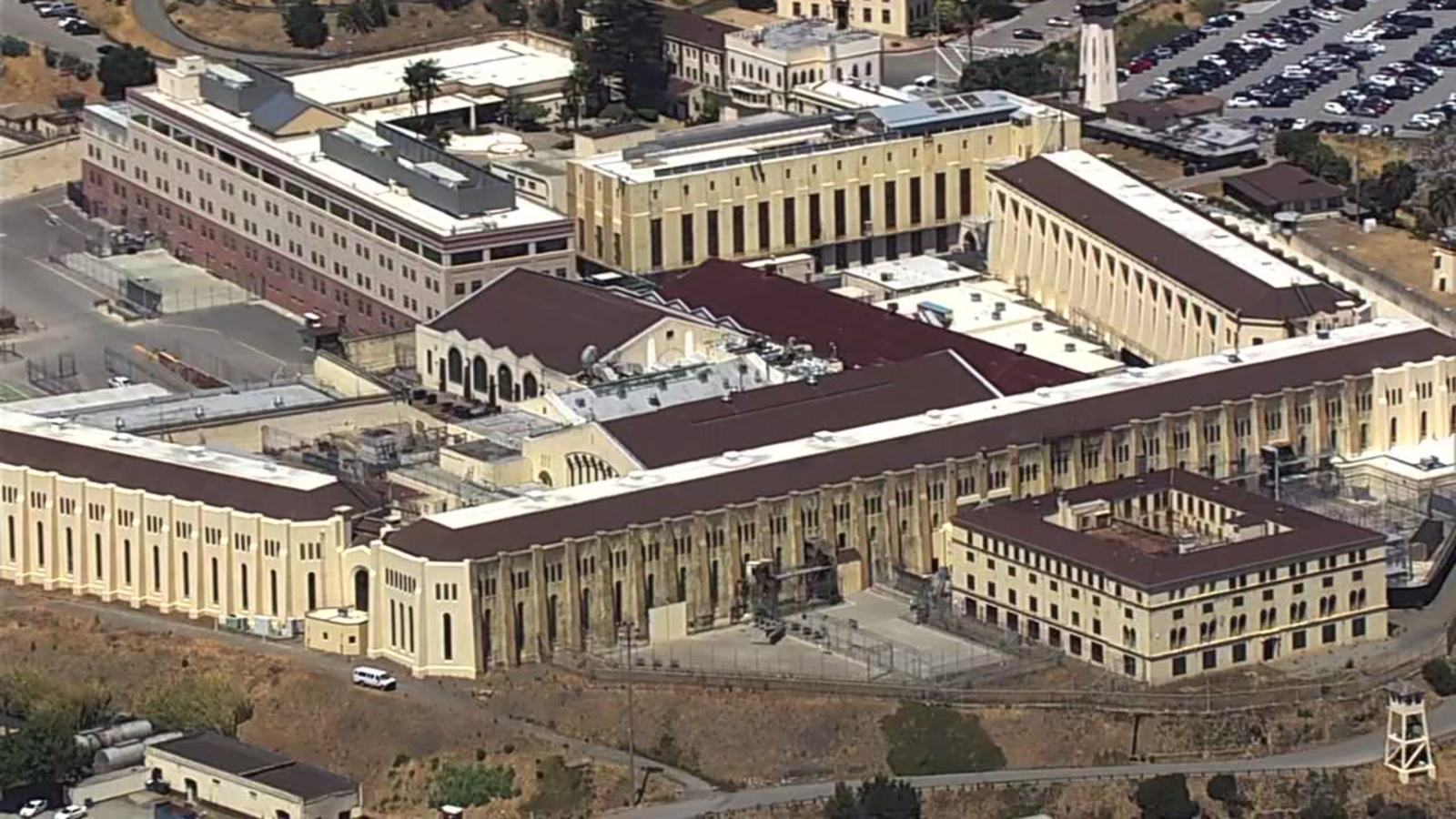 |
| Photo: ABC7 News |
San Quentin State Prison (SQ) is a California Department of Corrections and Rehabilitation state prison for men, located north of San Francisco in the unincorporated place of San Quentin in Marin County.
Opened in July 1852, San Quentin (called "The Arena" by prisoners) is the oldest prison in California. The state's only death row for male inmates, the largest in the United States, is located at the prison. It has a gas chamber, but since 1996, executions at the prison have been carried out by lethal injection, though the prison has not performed an execution since 2006. The prison has been featured on film, radio drama, video, podcast, and television; is the subject of many books; has hosted concerts; and has housed many notorious inmates.
All executions in California (male and female) take place at San Quentin. The execution chamber is located in a one-story addition close to the East Block. Women executed in California are transported to San Quentin by bus before being put to death.
The methods for execution at San Quentin have changed over time. Prior to 1893, the counties executed convicts. Between 1893 and 1937, 215 people were executed at San Quentin by hanging, after which 196 prisoners died in the gas chamber. In 1995, the use of gas for execution was ruled "cruel and unusual punishment", which led to executions inside the gas chamber by lethal injection. Between 1996 and 2006, 11 people were executed at San Quentin by lethal injection.
In April 2007, staff of the California Legislative Analyst's Office discovered that a new execution chamber was being built at San Quentin; legislators subsequently "accuse[d] the governor of hiding the project from the Legislature and the public." The old lethal injection facility had included an injection room of 43 square feet (4.0 m2) and a single viewing area; the facility that was being built included an injection chamber of 230 square feet (21 m2) and three viewing areas for family, victim, and press. Governor Arnold Schwarzenegger stopped construction of the facility the next week. The legislature later approved $180,000 to finish the project, and the facility was completed.
In addition to state executions, three federal executions have been carried out at San Quentin. Samuel Richard Shockley and Miran Edgar Thompson had been incarcerated at Alcatraz Island federal penitentiary and were executed on December 3, 1948, for the murder of two prison guards during the Battle of Alcatraz. Carlos Romero Ochoa had murdered a federal immigration officer after he was caught smuggling illegal immigrants across the border near El Centro, California. He was executed at San Quentin's gas chamber on December 10, 1948.
On March 13, 2019, after Governor Gavin Newsom ordered a moratorium on the state's death penalty, the state withdrew its current lethal injection protocol, and San Quentin dismantled and indefinitely closed its gas and lethal injection execution chambers.
5. Missouri State Penitentiary
 |
| Photo: Jeffersonpentours |
Once called the “Bloodiest 47 acres in America”, the Missouri State Penitentiary in Jefferson City was the oldest continuously operating correctional institution west of the Mississippi River when it closed. As such, it should come as no surprise that it is said to be haunted.
Jefferson City became the capital of Missouri in 1822, but in the next decade, there were other towns that were vying for the opportunity to take that status for themselves. Jefferson City needed to do something to ensure that it would remain the capital city and Governor John Miller came up with the solution in 1831 when he proposed the construction of a maximum-security state penitentiary. The prison was authorized by the Missouri Legislature the next year. Construction began in 1834 and opened in 1836, the same month that the Alamo fell in Texas. Initially, it housed just 15 prisoners who worked in a shop making bricks.
When the prison, nicknamed “The Walls”, was fully completed it was surrounded by a high limestone wall with 15 officer towers.
After 168 years of operation, the prison was closed in 2004 and the inmates were moved to the new Jefferson City Correctional Center. During its history, the facility contained as many as 50 buildings. After it closed, many were razed to make room for a federal courthouse and other state buildings.
Tales of ghostly visitors began long before the prison closed with both prisoners and guards reporting having seen apparitions.
Throughout the old facilities, people have heard cell doors slamming, ghostly footsteps, loud banging, shadowy figures, the smell of cigarette smoke, objects being mysteriously moved around, and fast-moving entities. They also report having felt dread, a sense of sorrow, and feeling of being watched.
Today, the Gothic style Missouri State Penitentiary ranks as one of the most incredible haunted prisons in the country, along with the Eastern State Penitentiary in Pennsylvania, the Ohio State Reformatory, and the West Virginia Penitentiary.
Several major ghost-hunting groups have conducted investigations at the prison over the years, recording ghostly voices and shadowy people.
4. Eastern State Penitentiary
 |
| Photo: Getty Images |
When Eastern State Penitentiary opened in 1829, spectators from around the world marveled at its grand architecture and radical philosophy.
The experiment, to reform criminals through strict isolation other than daily visits from the warden and guards, soon became a model for prison design worldwide.
Once built, it was the most expensive construction in the United States at the time.
After 142 years in use, Eastern State finally closed its doors as a prison in 1971. It has since been named a National Historic Landmark.
Located in the Fairmount section of Philadelphia, Eastern State Penitentiary remains one of the most famous prisons in the world, with a list of former inmates that includes bank robber “Slick Willie” Sutton and legendary gangster Al Capone.
In its day, Eastern State set the standard for penal reform, with its soaring, castle-like Gothic architecture and its founders’ Quaker-inspired belief that solitary confinement could help reform criminals. An estimated 300 prisons on four continents used Eastern’s distinctive “wagon-wheel” floor plan as a blueprint.
Today, tours offer a glimpse of life inside the prison’s historic cell blocks through exhibits like Al Capone’s restored 19th-century cell, stories of inmate escapes, and critically acclaimed art installations.
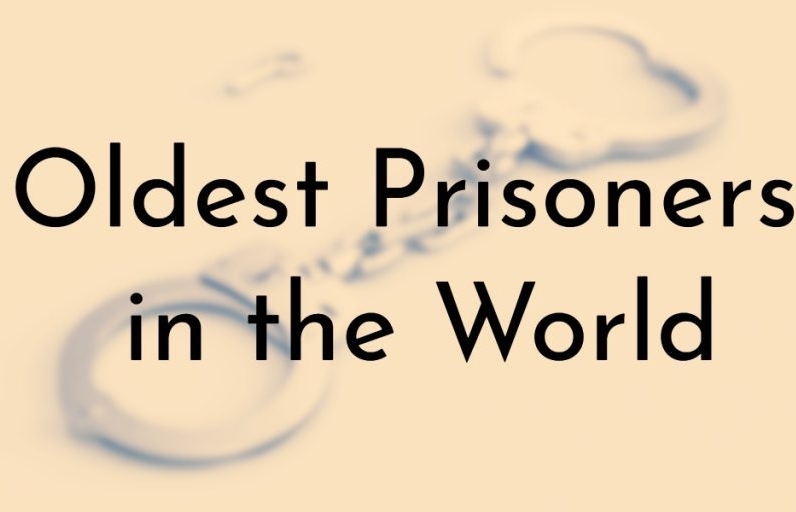 Top 10 Oldest Prisoners in the World Top 10 Oldest Prisoners in the World Who is the oldest prisoner in the world? Check out the answer in our list of the 10 oldest inmates on Earth below! |
3. Sing Sing Correctional Facility
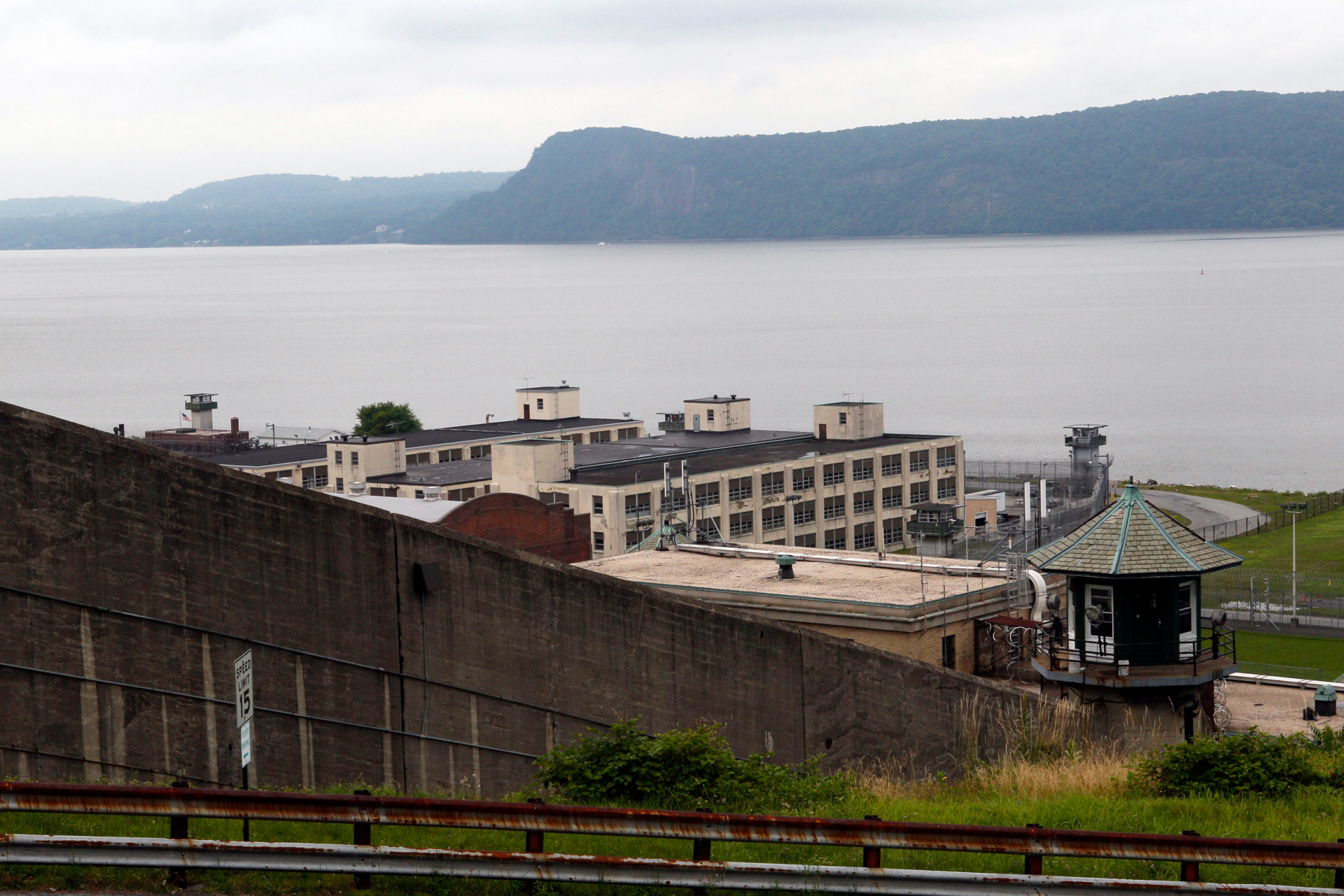 |
| Photo: Wikipedia |
In 1825, the State of New York appropriated $20,100 to purchase a 130-acre site on the Hudson River for what is now the Sing Sing Correctional Facility.
By May of that year, 100 incarcerated men were transported from the Auburn (NY) Prison to a new site in the town of Mount Pleasant (also the prison's original name), but without "a place to receive them or a wall to enclose them."
To construct the 1825 Cellblock, the incarcerated excavated marble from a nearby marble quarry. The original building was 476 feet long, 44 feet wide and four tiers high, with a capacity of 800 cells, all built of Sing Sing marble. Each cell was 7 feet deep, 3 feet 3 inches wide and 6 feet 7 inches high. On November 26, 1828, the incarcerated occupied their cells for the first time. Within a few years, the men continued to mine Sing Sing marble, which was used in the construction of such notable buildings as Lyndhurst, New York University, Grace Church, the New York State Capitol Building and the United States Treasury Building. Two additional buildings were built at the prison by 1830, one containing a hospital and a kitchen, and the other a chapel for 900 men.
In the early 20th century, prison reform initiatives resulted in dramatic changes in the treatment of the incarcerated such as the abolition of the lockstep, the granting of “freedom of the yard” to inmates, and the introduction of baseball and other recreation. For many years, the New York Yankees visited the jail to play an exhibition game against the inmates. In the first half of the 20th century, new construction projects included cellblocks, a chapel, an administration building, storehouse, mess hall, bath house and barber shop. Inmates also had had access to a library and classrooms. Warden Lewis E. Lawes allowed a former New York City newspaper editor convicted of murder to build a large birdhouse within the prison grounds.
Sing Sing also became a popular movie backdrop during the 1930s and 1940s, especially for films featuring James Cagney, and was used in 1995 for remakes of "Kiss of Death" and "Bullet." Warner Bros. studio filmed many features here and donated funds for a prison gymnasium in 1934.
2. Auburn Correctional Facility
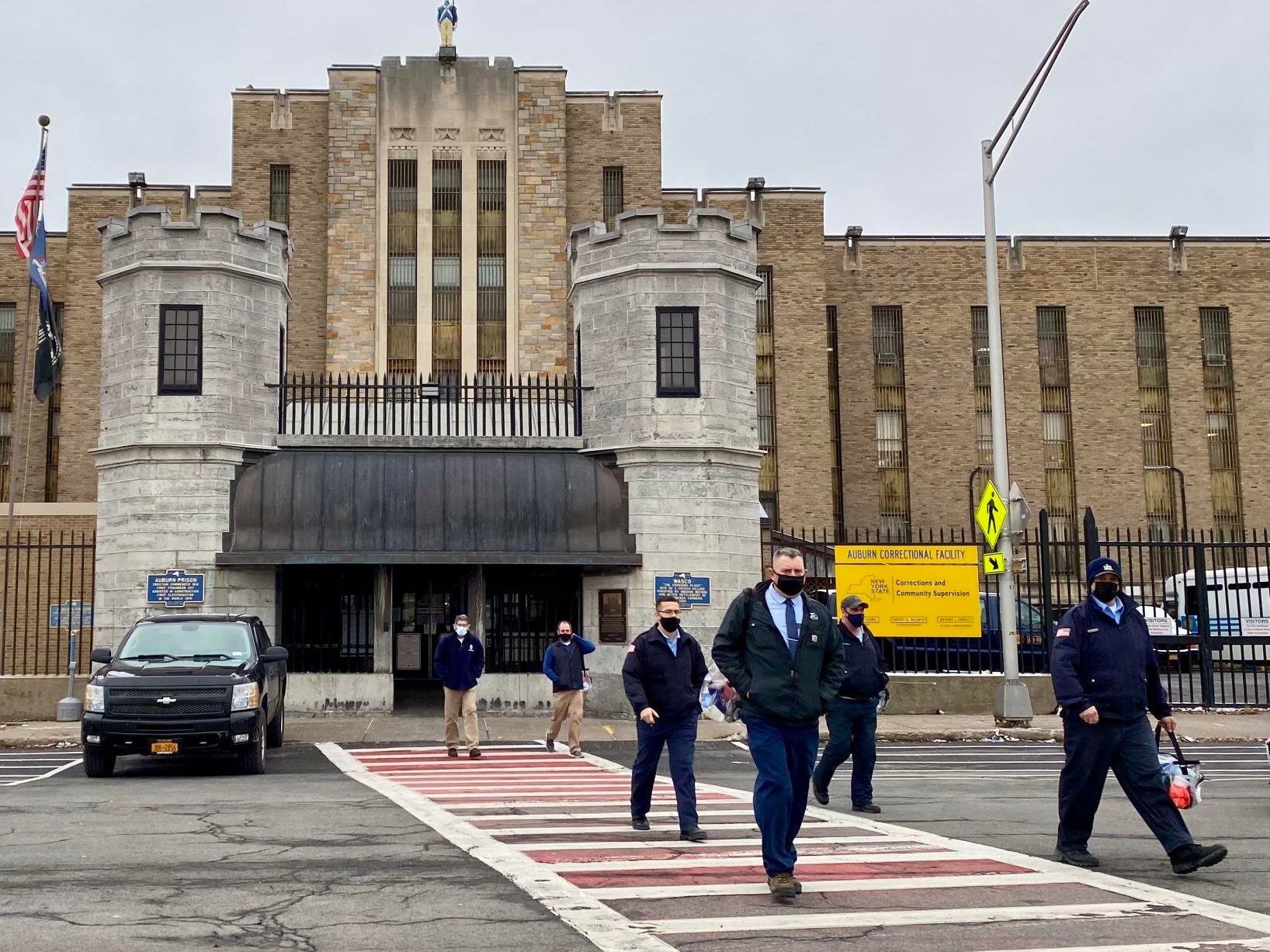 |
| Photo: Auburn citizen |
Auburn Correctional Facility is a state prison on State Street in Auburn, New York, United States. It was built on land that was once a Cayuga village. It is classified as a maximum security facility.
Constructed in 1816 as Auburn Prison, it was the second state prison in New York (after New York City's Newgate, 1797–1828), the site of the first execution by electric chair in 1890, and the namesake of the "Auburn system," a correctional system in which prisoners were housed in solitary confinement in large rectangular buildings, and performed penal labor under silence that was enforced at all times. The prison was renamed the Auburn Correctional Facility in 1970. The prison is among the oldest functional prisons in the United States.
In its early years, the prison charged a fee to tourists in order to raise funds for the prison. Eventually, to discourage most visitors, the fee was increased.
1. New Jersey State Prison
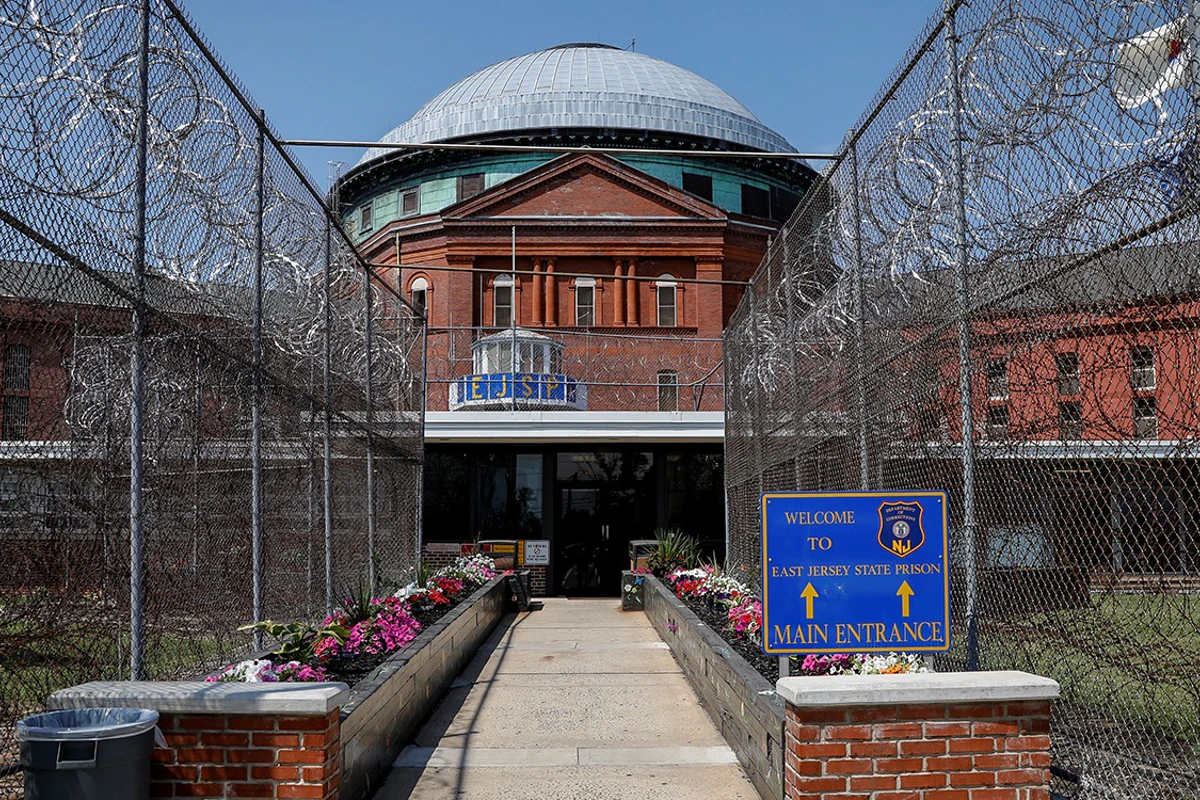 |
| Photo: The Intercept |
The New Jersey State Prison (NJSP), formerly known as Trenton State Prison, is a state men's prison in Trenton, New Jersey operated by the New Jersey Department of Corrections. It is the oldest prison in New Jersey and one of the oldest correctional facilities in the United States. It is the state's only completely maximum security institution, housing the most difficult and/or dangerous male offenders in the inmate population. NJSP operates two security units and provides a high level of custodial supervision and control. Professional treatment services, such as education and social work, are a priority at the facility. The Bureau of State Use Industries operated the bedding and clothing shops that were once located in Shop Hall at the facility. These industries have been relocated to South Woods State Prison.
NJSP also housed New Jersey's death row for men and execution chamber until the state abolished capital punishment in 2007. Its inmates include John Martini, who was condemned for the kidnapping and murder of a Bergen County businessman, and Jesse Timmendequas, who was sentenced to death for the rape and murder of 7-year-old Megan Kanka. This crime inspired the passing of Megan's Law, which requires communities to be notified when a convicted sex offender moves into their area.
 10 Mysteries of Human Behaviour That Science Fails to Explain 10 Mysteries of Human Behaviour That Science Fails to Explain Human behaviour is an interesting topic to talk about, and scientists have been learning about it for years. Here is top 10 mysteries of human ... |
 10 Universe’s Mysteries That Science Can’t Explain 10 Universe’s Mysteries That Science Can’t Explain Universe has many interesting facts, secrets and mysteries that human has not discovered yet. Here is 10 universe's mysteries that even scientists have a hard ... |
 10 Least Common Birthdays in the United States 10 Least Common Birthdays in the United States While holidays are a popular time for baby-making, babies are less likely to be born on popular holidays. Read on to find out what are ... |
 10 Most Common Birthdays In The United States 10 Most Common Birthdays In The United States How common is your birthday in the United States? Some people have plenty of company, while others basically have the day all to themselves — ... |

























